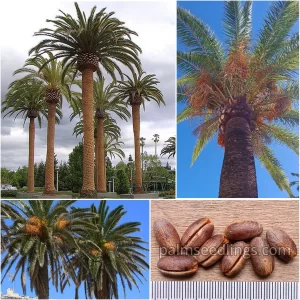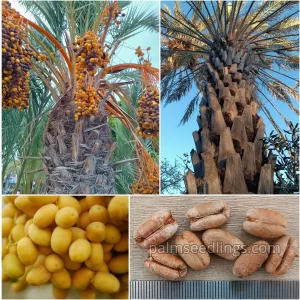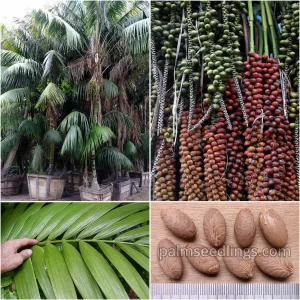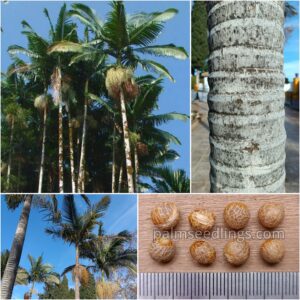Menu
4,00 € – 150,00 €
Product Details
Dypsis Decaryi, commonly known as the Triangle Palm, is a distinctive and visually striking palm species recognized for its unique triangular fronds and bold architectural appeal. Originating from Madagascar, this palm is a captivating addition to tropical and subtropical landscapes.
-Germination Rate: Very high
-Germination Time: Fast
-Germination Difficulty: Easy
-Growth speed: Medium
Select Quantity
*Shipping cost is calculated automatically in the cart after adding the products.
Dypsis Decaryi (Triangle Palm) (New name: Chrysalidocarpus decaryi)
Habitat:
Indigenous to the Madagascar dry forest, the Triangle Palm thrives in tropical climates with well-defined wet and dry seasons. It is well-adapted to arid environments and can be found in various habitats, from rocky hillsides to lowland forests.
Outstanding Features:
The most notable feature of the Triangle Palm is its triangular-shaped fronds, arranged in three distinct planes along the petiole. This distinctive architectural arrangement gives the palm its name. The trunk is slender, often with a bulging base, contributing to the overall visual appeal.
General Appearance:
With a mature height ranging from 20 to 30 feet, the Triangle Palm has a relatively modest stature compared to other palms. The trunk is typically solitary, and the crown is formed by the upward-sweeping triangular fronds, creating a dramatic and symmetrical silhouette. The palm produces small, inconspicuous flowers and small, spherical fruits.
Applications:
The Triangle Palm is valued for its striking appearance and is commonly used in landscaping to add a unique focal point to gardens, parks, and public spaces. Its distinctive frond arrangement makes it a popular choice for modern and architectural designs. While not known for its commercial applications, the Triangle Palm is highly prized for its ornamental value.
Adaptability:
Adaptable to a range of soil types, the Triangle Palm prefers well-drained soil and is moderately drought-tolerant once established. It is well-suited for tropical and subtropical climates and can withstand periodic dry periods. The palm’s unique visual appeal, combined with its adaptability, makes it a sought-after choice for landscaping in regions with a warm climate.
| Weight | N/A |
|---|---|
| Quanity | 10 Seeds, 100 Seeds, 1.000 Seeds |




All rights reserved PalmseedlingsⓇ 2025.